FRANCIS I KING OF FRANCE
"ALL IS LOST SAVE HONOUR"
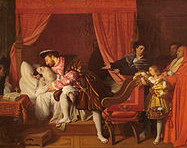
Francis I receiving the last breath of Leonardo da Vinci [19th Century painting by Ingres]
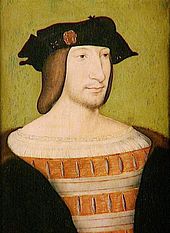
Francis I in 1515
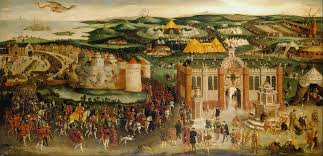
The tents and pavilions of the Field of the Cloth of Gold
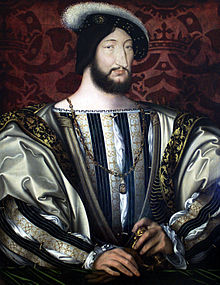
Francis I in 1530
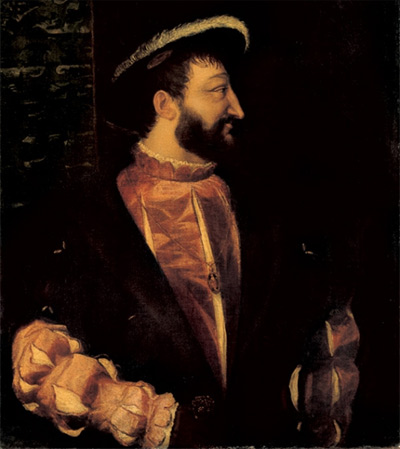
Francis I in 1539 [painted by Titian]
If ever there was a monarch who embodied the transition from the medieval to the modern world it was Francis I king of France. As a patron of the arts Francis launched the French Renaissance by persuading a number of Italian artists, including the ageing Leonard da Vinci, to build and decorate his royal palaces. Francis also sponsored Cartier and Verrazzano on their voyages of discovery to The Americas but he was also a product of the Age of Chivalry and it was his exploits on the battlefield that changed European history.
Francis became king in 1515, on the death of his childless cousin Louis XII, and though he was barely 21 years old he immediately set about continuing his predecessor's war to drive the Hapsburg emperors out of Italy. True to his reputation as the Roi Chevalier (knight-king) Francis led the victorious charge at Marignano, the battle that secured the Duchy of Milan for France, but in 1519 he failed in his bid to become Holy Roman Emperor.
Had Francis secured his election to the imperial throne, he would've restored Charlemagne's empire and ruled the whole of central Europe from the Pyrenees to Poland but the election was won Francis' Hapsburg rival Charles V king of Spain. To counter this encirclement by his enemies, Francis tried to forge an alliance with Henry VIII king of England, and negotiations were conducted at a temporary tented city known to history as The Field of the Cloth of Gold, but once again Francis failed in his ambitions.
Despite two weeks of lavish hospitality Henry, who was secretly plotting with Charles V to seize the French throne for himself, refused to join Francis' alliance. Despite this setback, Francis was determined to break the Hapsburg ring around his kingdom and he launched the next round of the interminable Italian Wars in 1521.
Francis opened hostilities by invading Hapsburg lands in the Pyrenees and the Low Countries, Charles responded by driving the French out of their recently conquered territories in Northern Italy. Charles also backed an invasion of France by the French rebel the Duke of Bourbon. Francis acted quickly and forced Bourbon to retreat, but his subsequent attempt to reconquer Milan ended in disaster. Though Milan surrendered without firing a shot, Francis was captured whilst leading a charge against the imperial army trying to break the French siege of Pavia.
Whilst a prisoner of his hated enemy, the French king was forced to sign the Treaty of Madrid repudiating all his claims to Italy but as soon as he was released (in 1526) Francis tore up the treaty and returned to the attack. Desperate to secure allies, Francis signed a secret pact with the Ottoman Turkish Sultan Suleiman the Magnificent, Christendom's most implacable enemy, who opened a second front by attacking Hapsburg lands in the east.
Suleiman won a great battle at Mohacs [1526] in southern Hungary but this victory did nothing to help Francis. The anti-imperial alliances sponsored by the French, which at various times included Venice, Milan, the Papal States and even England, failed to break Hapsburg power. In 1546 Francis' final attempt to conquer the Hapsburg Empire, which led to fighting in France, North Africa and the Low Countries as well as Italy, ended in stalemate. Both sides were now bankrupt and riven with internal strife as Catholics and Protestants tried to settle their religious differences by violence.
Francis died in 1547 having succeeded in none of his foreign policy ambitions and it is said that he died complaining about the weight of a crown that he had first thought was a gift from God.